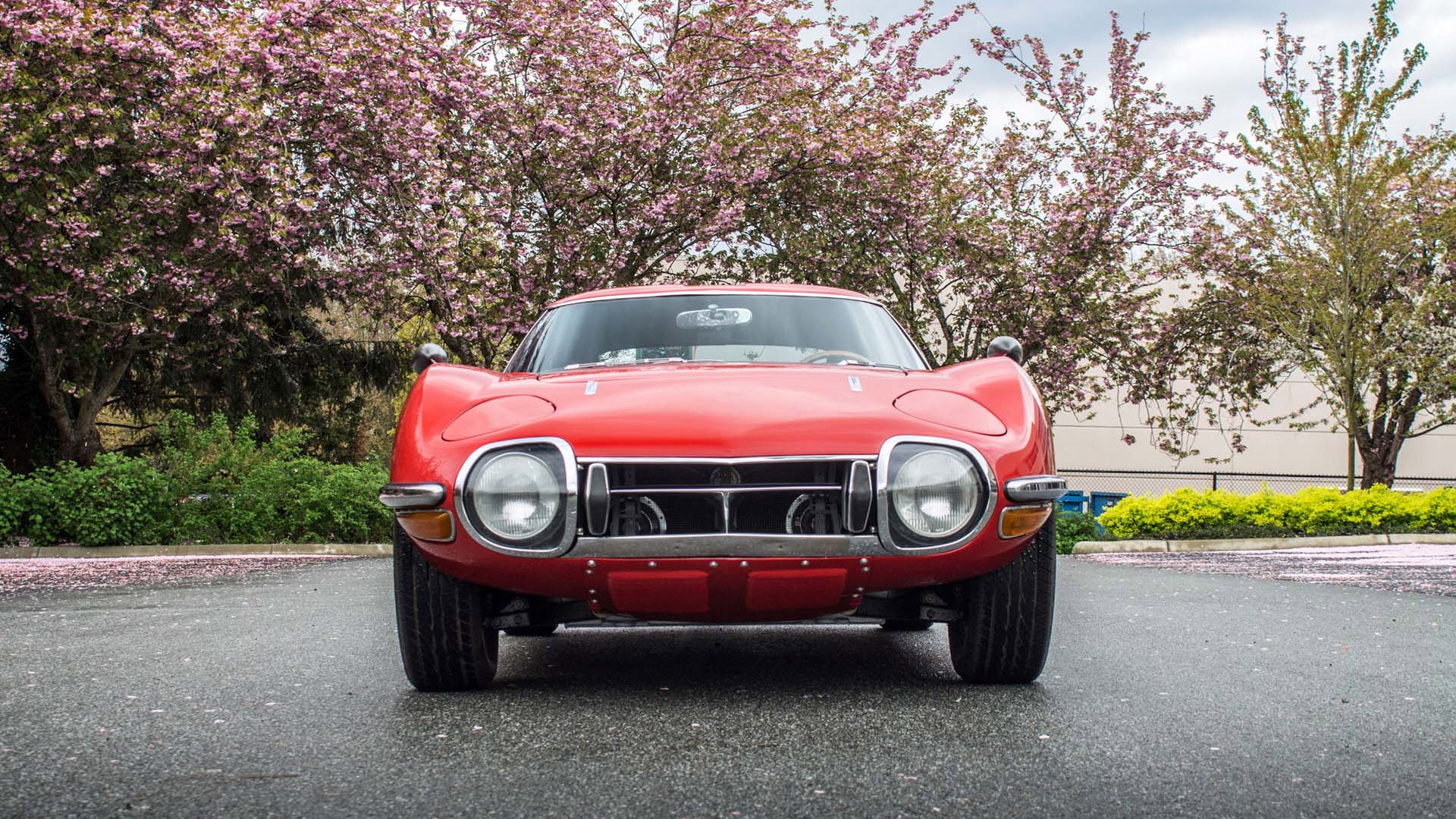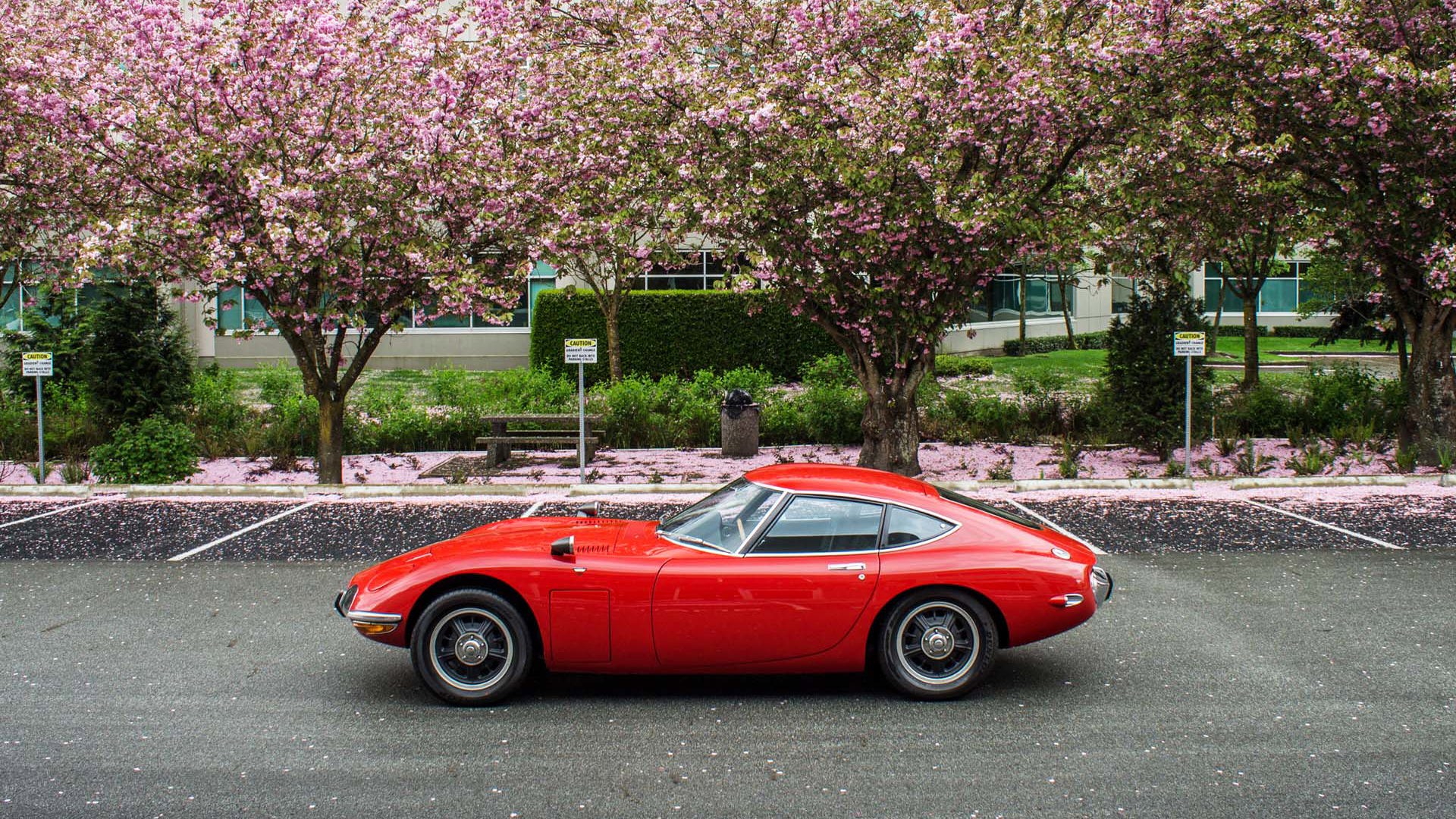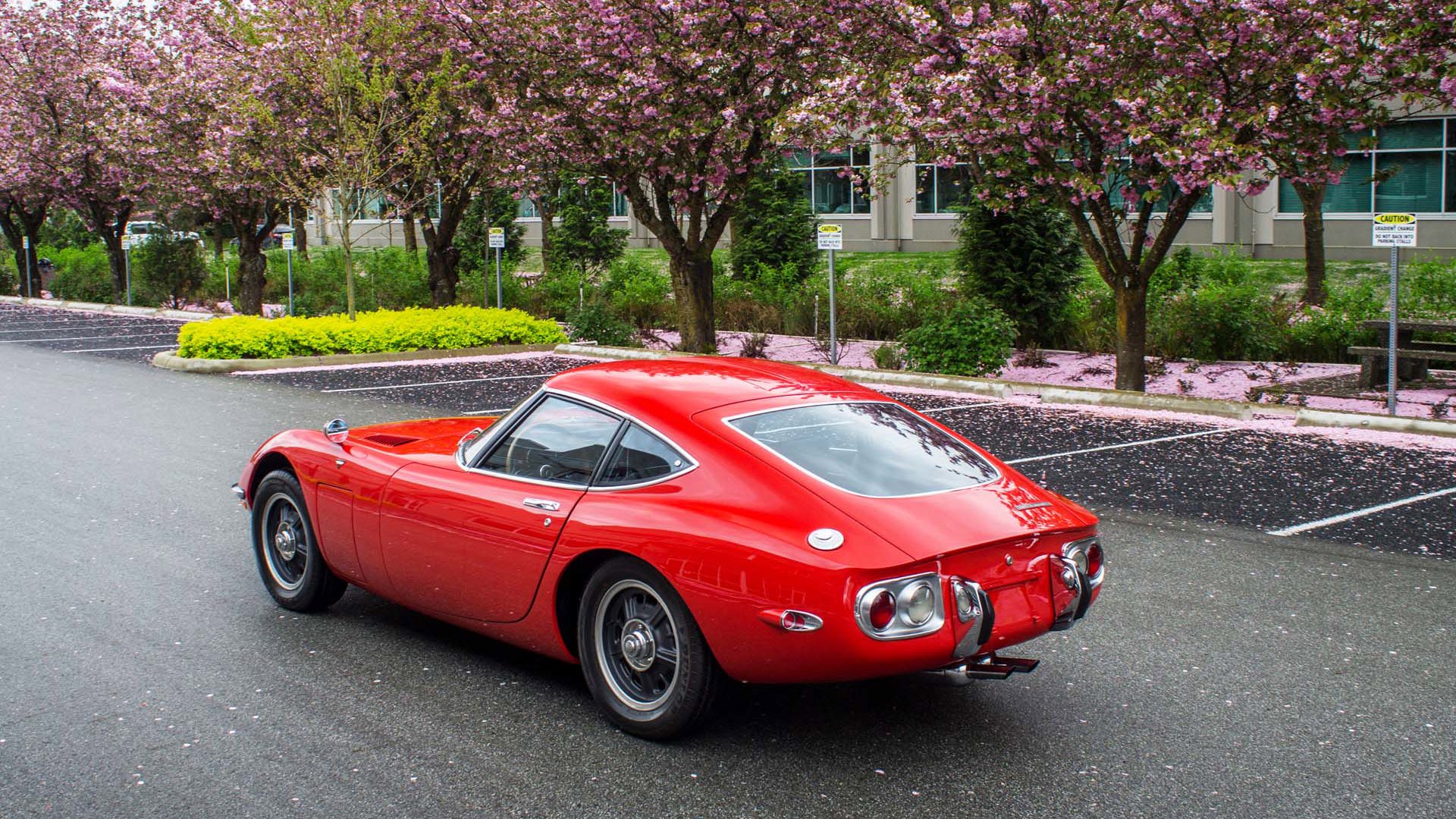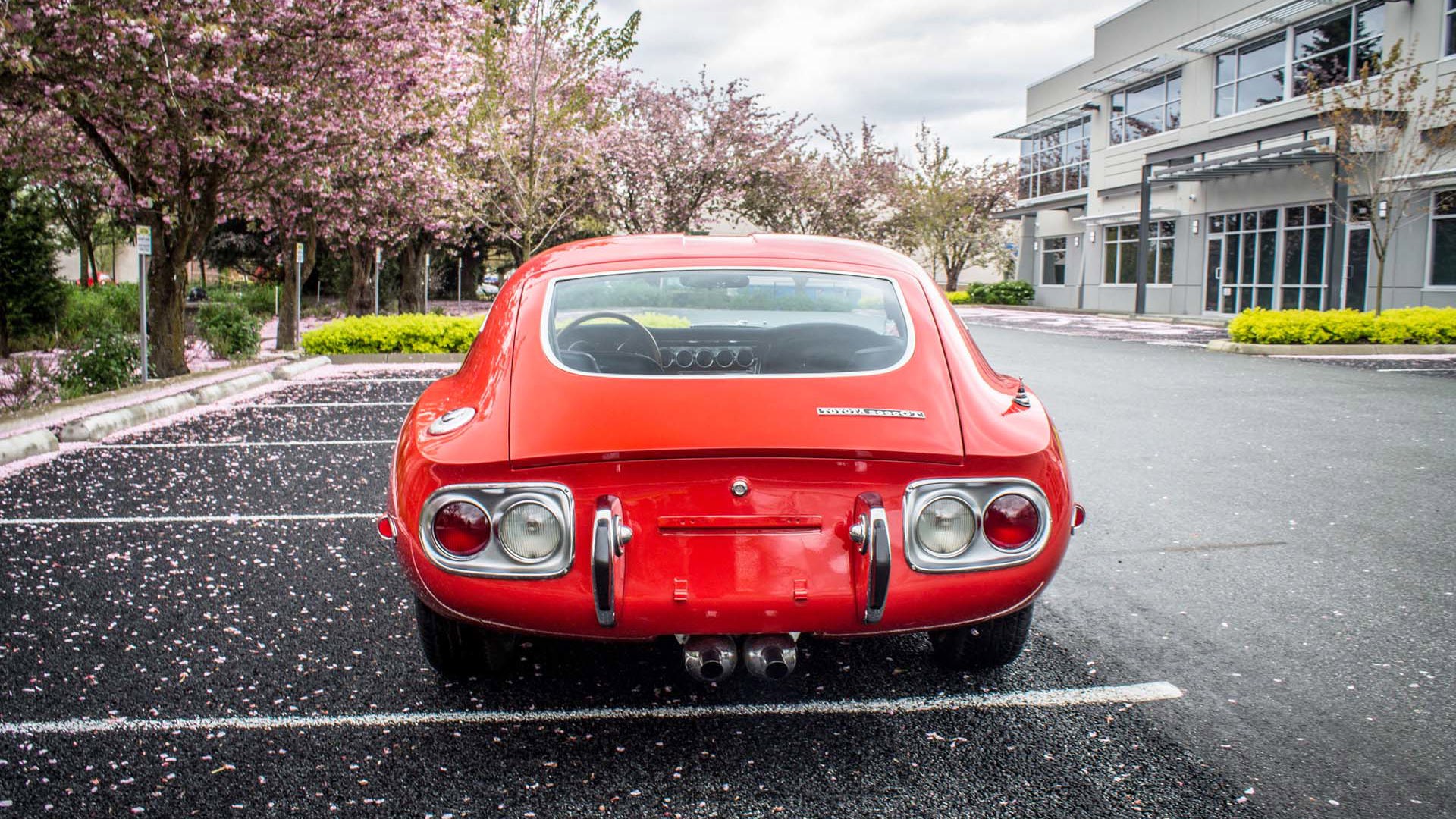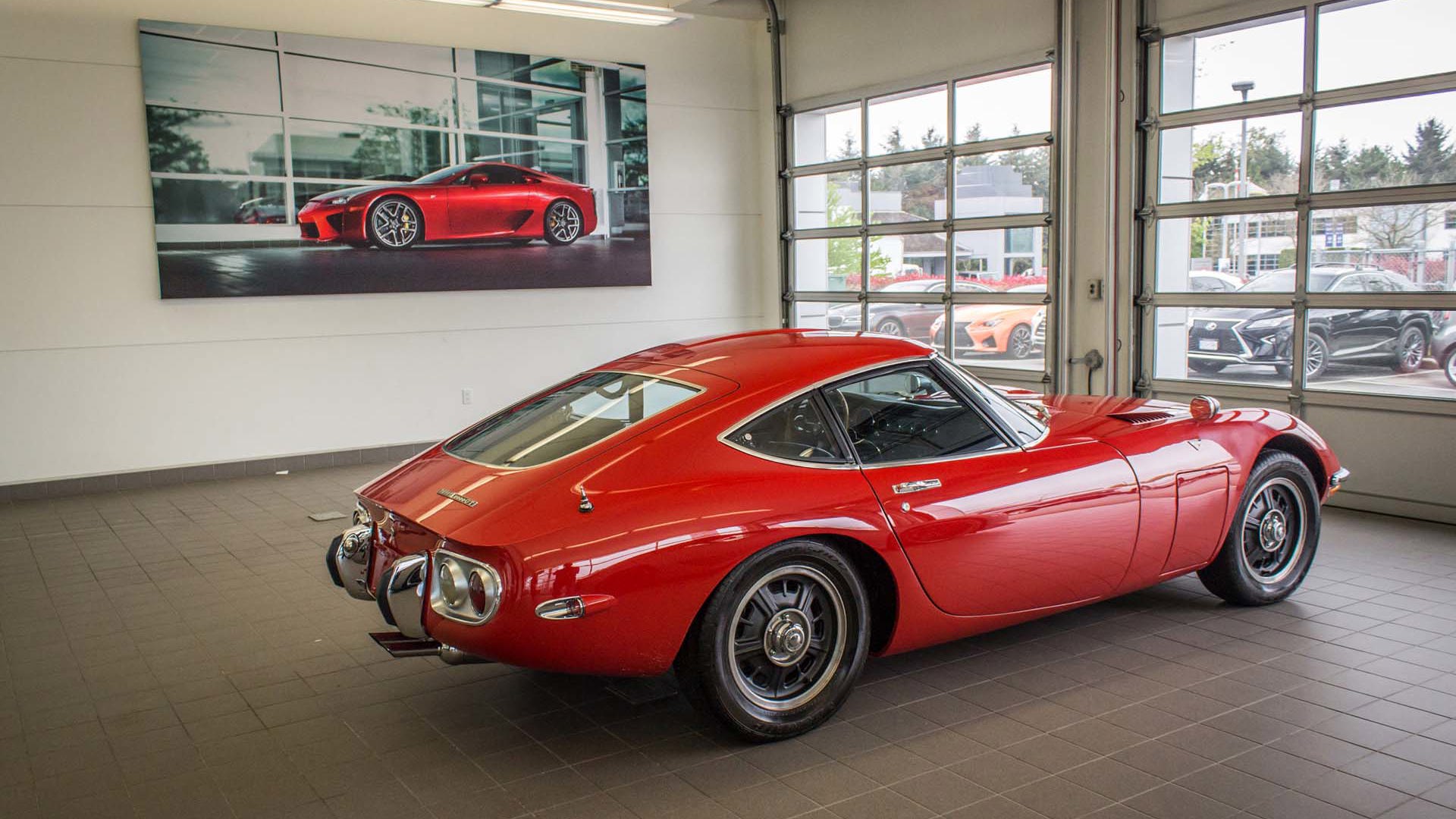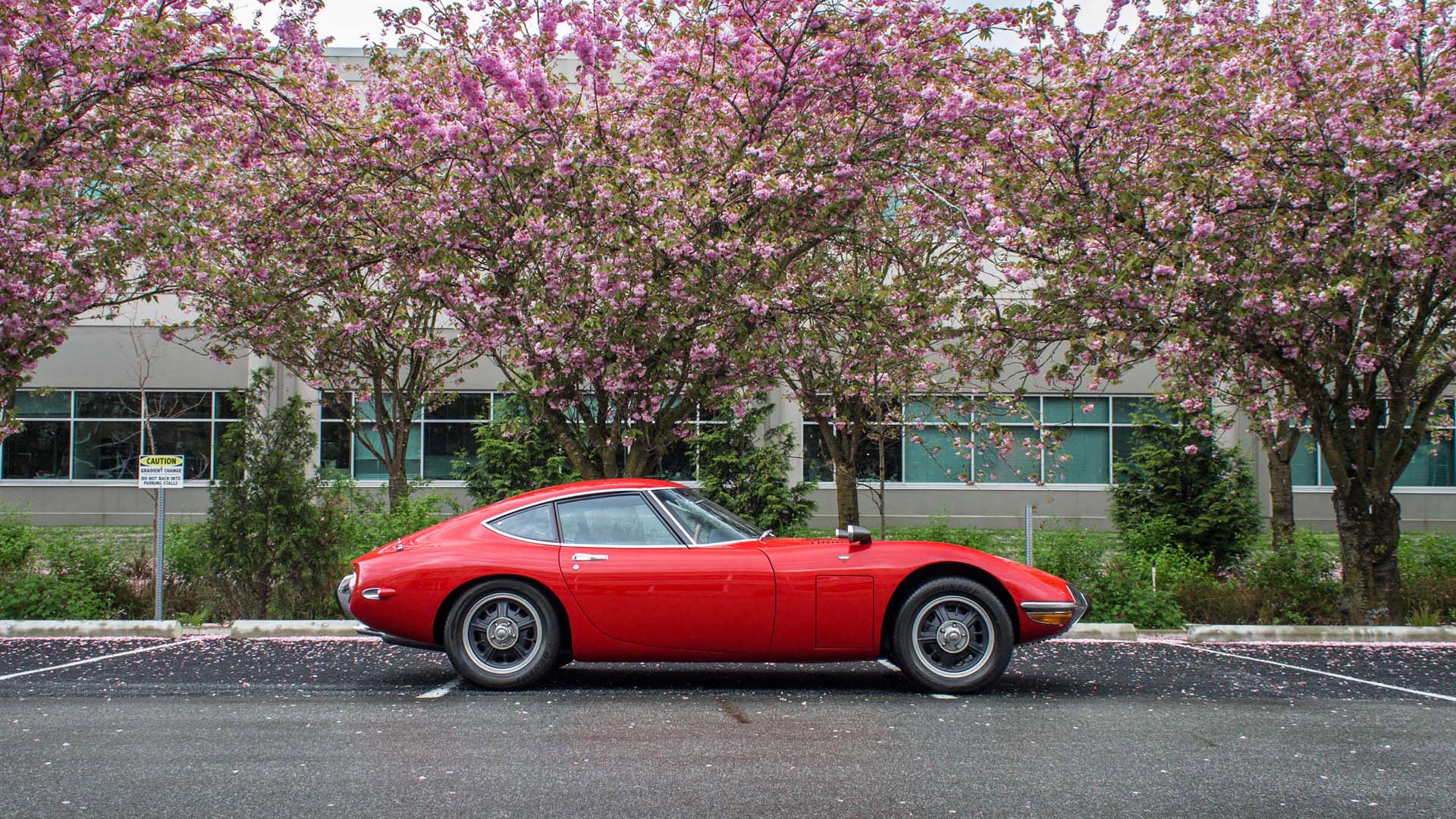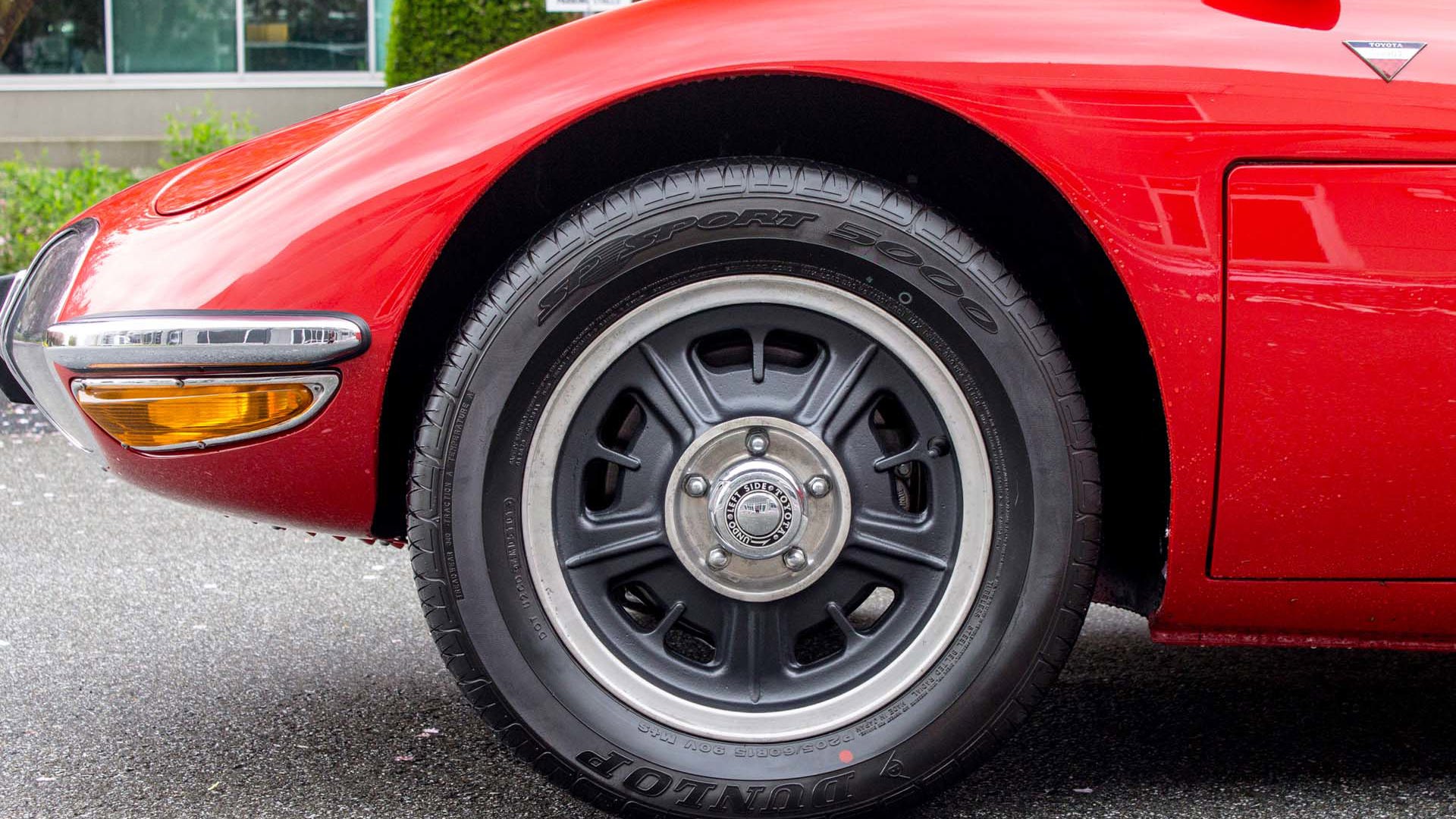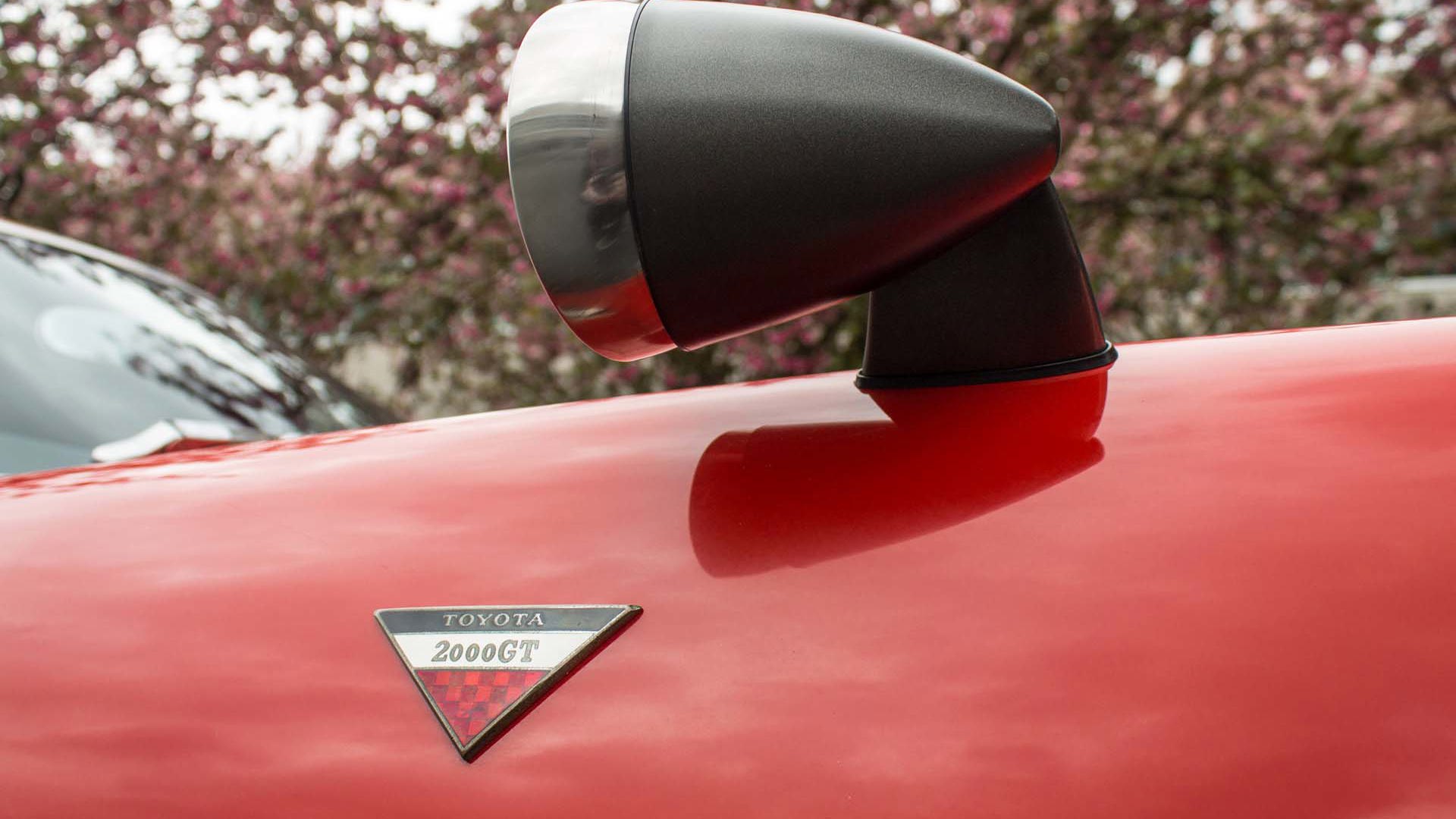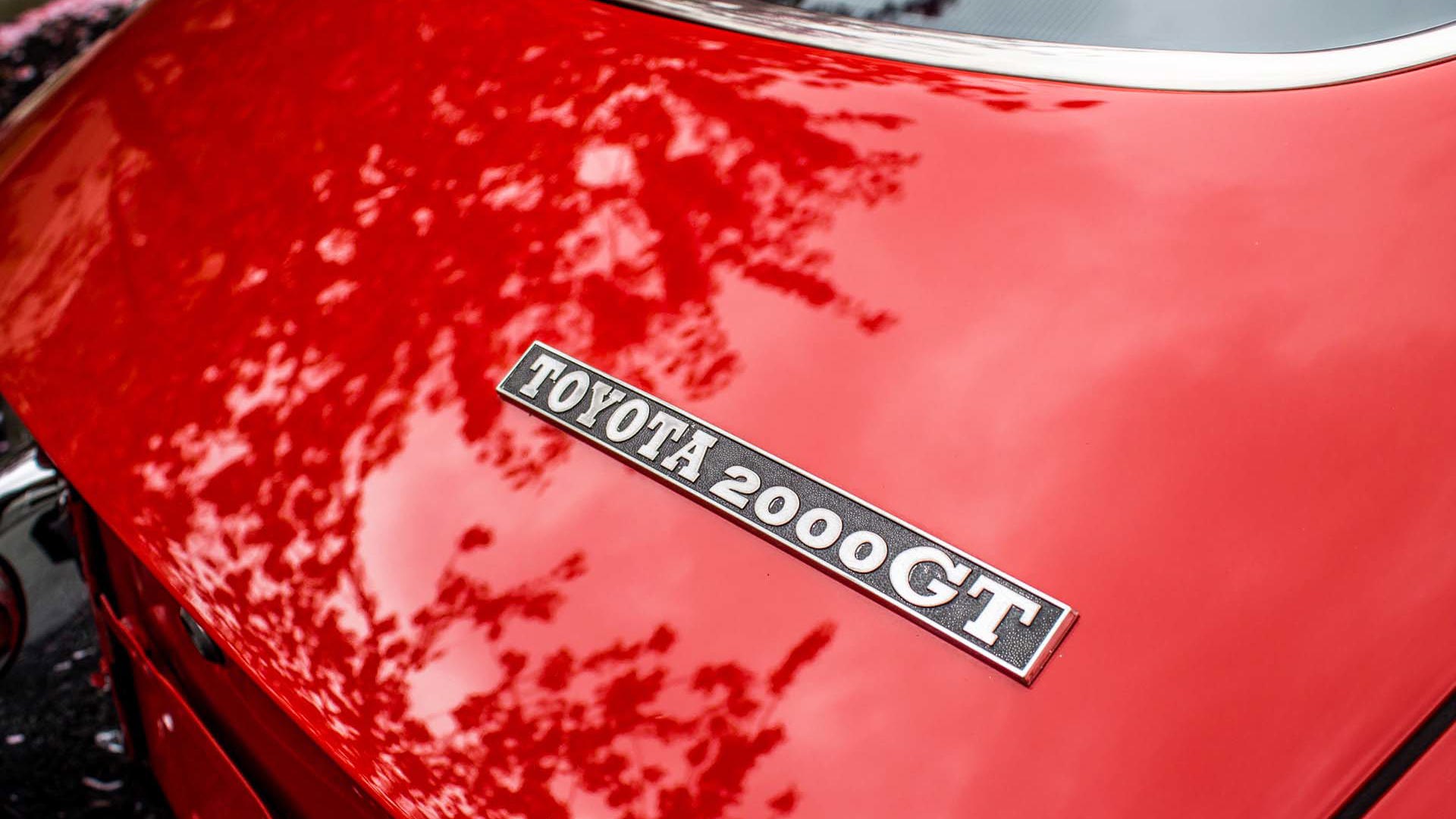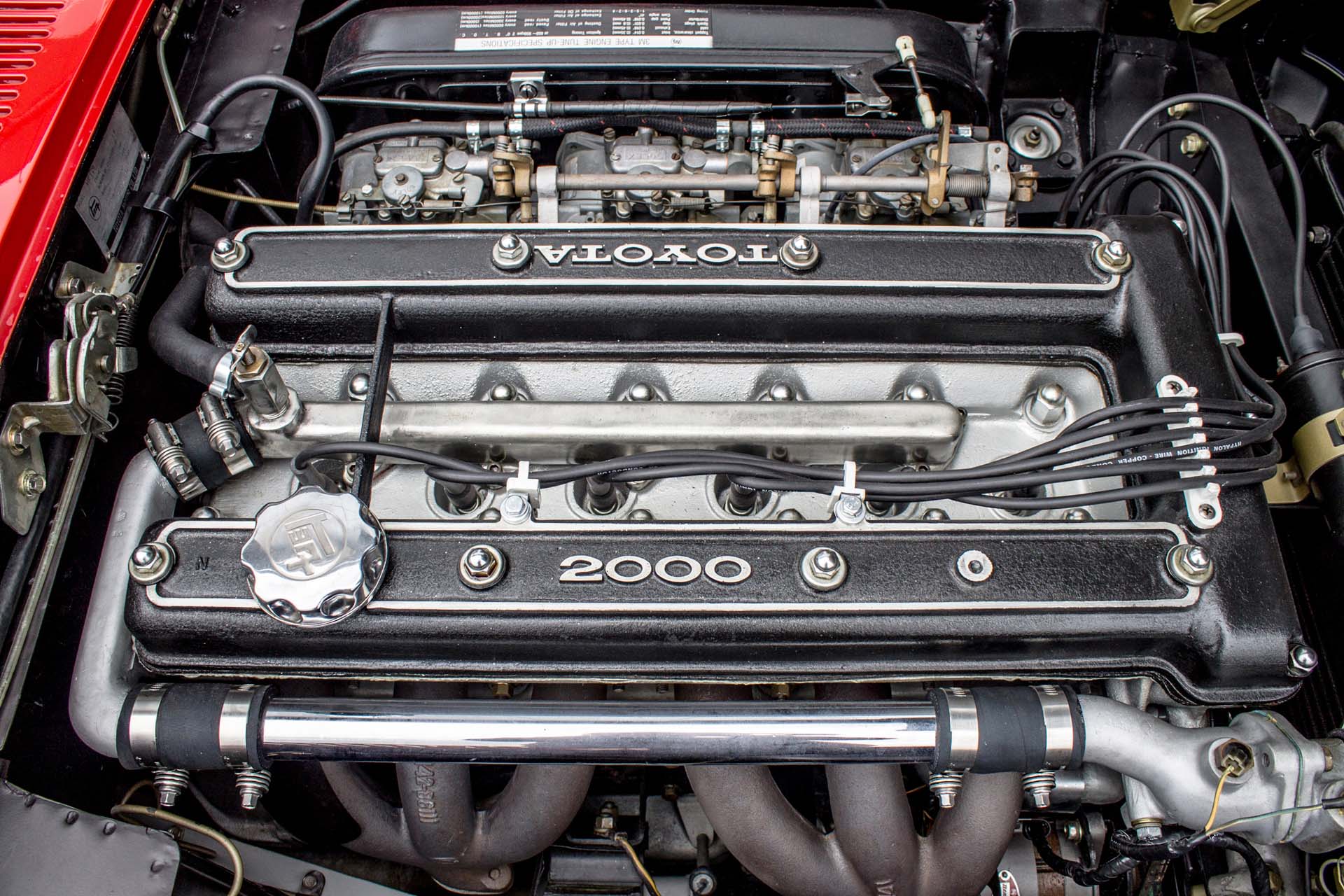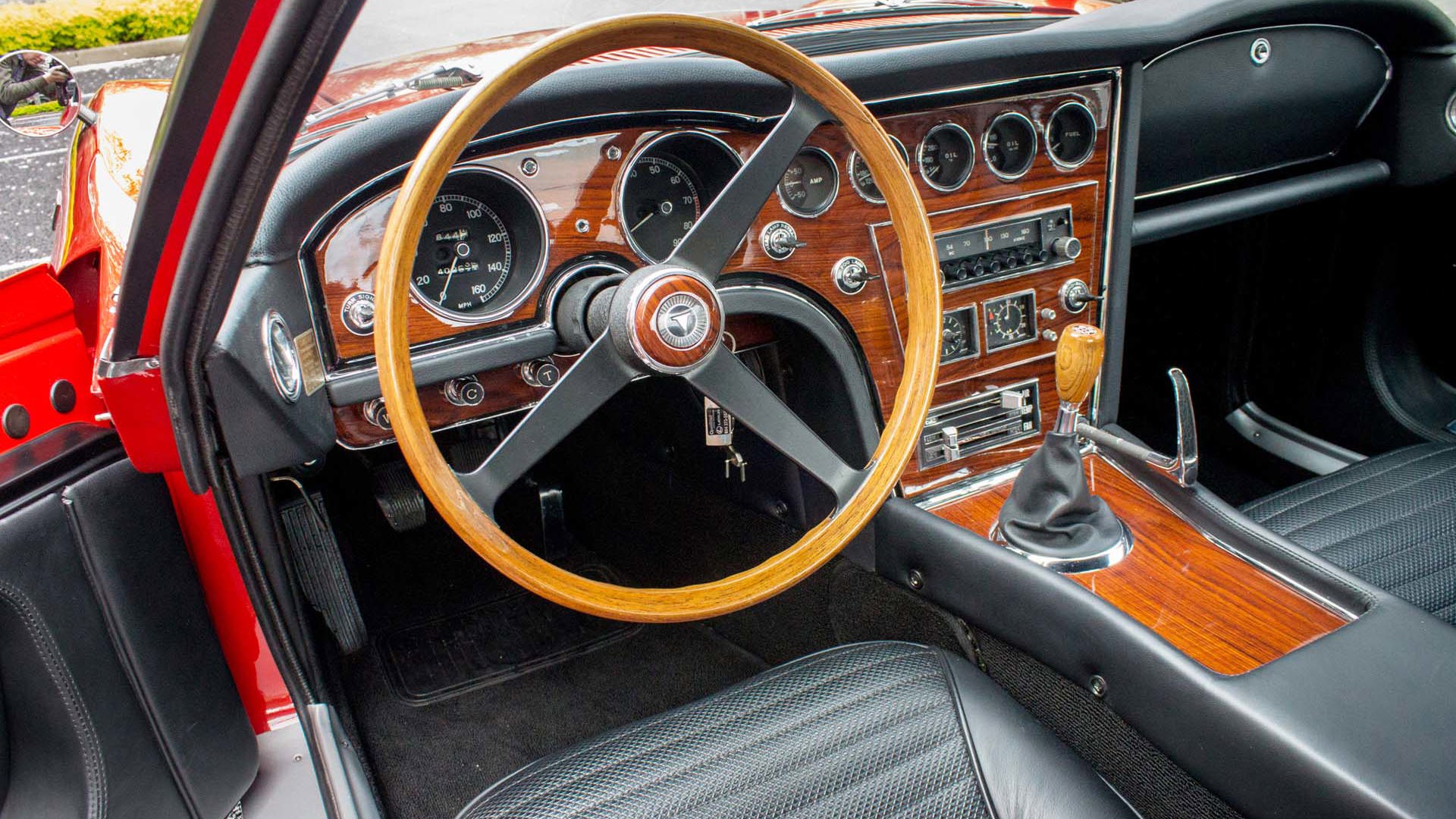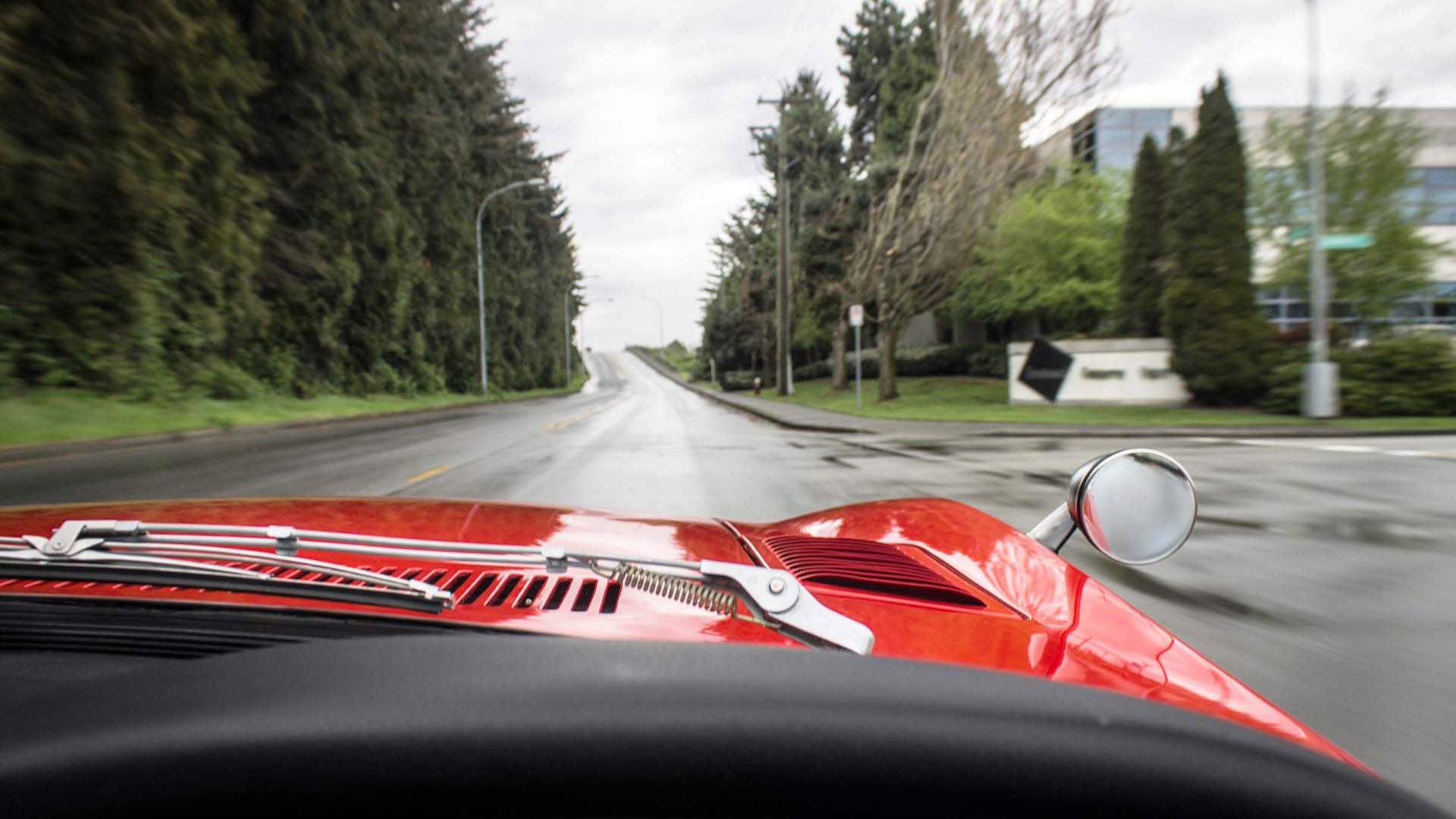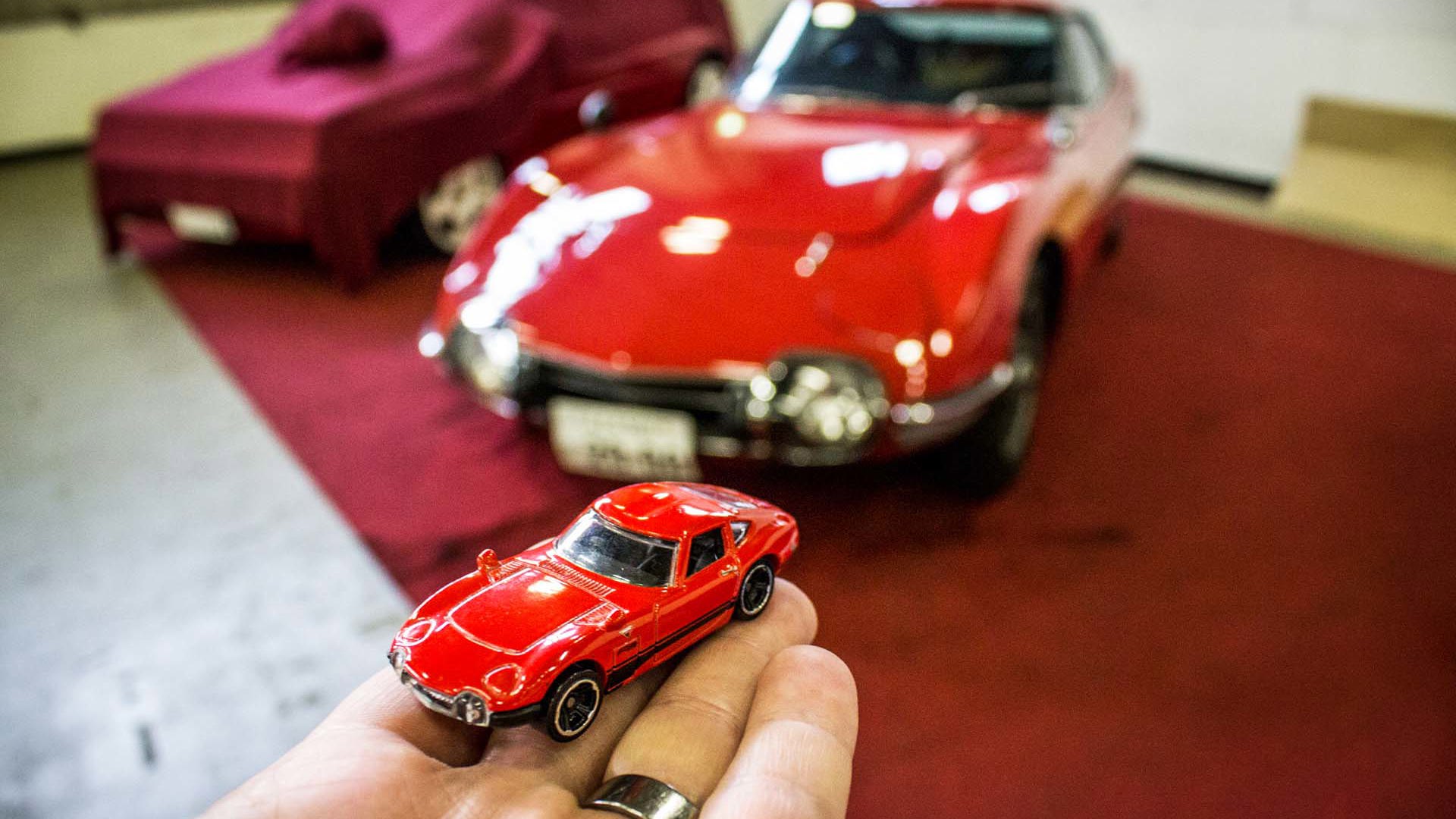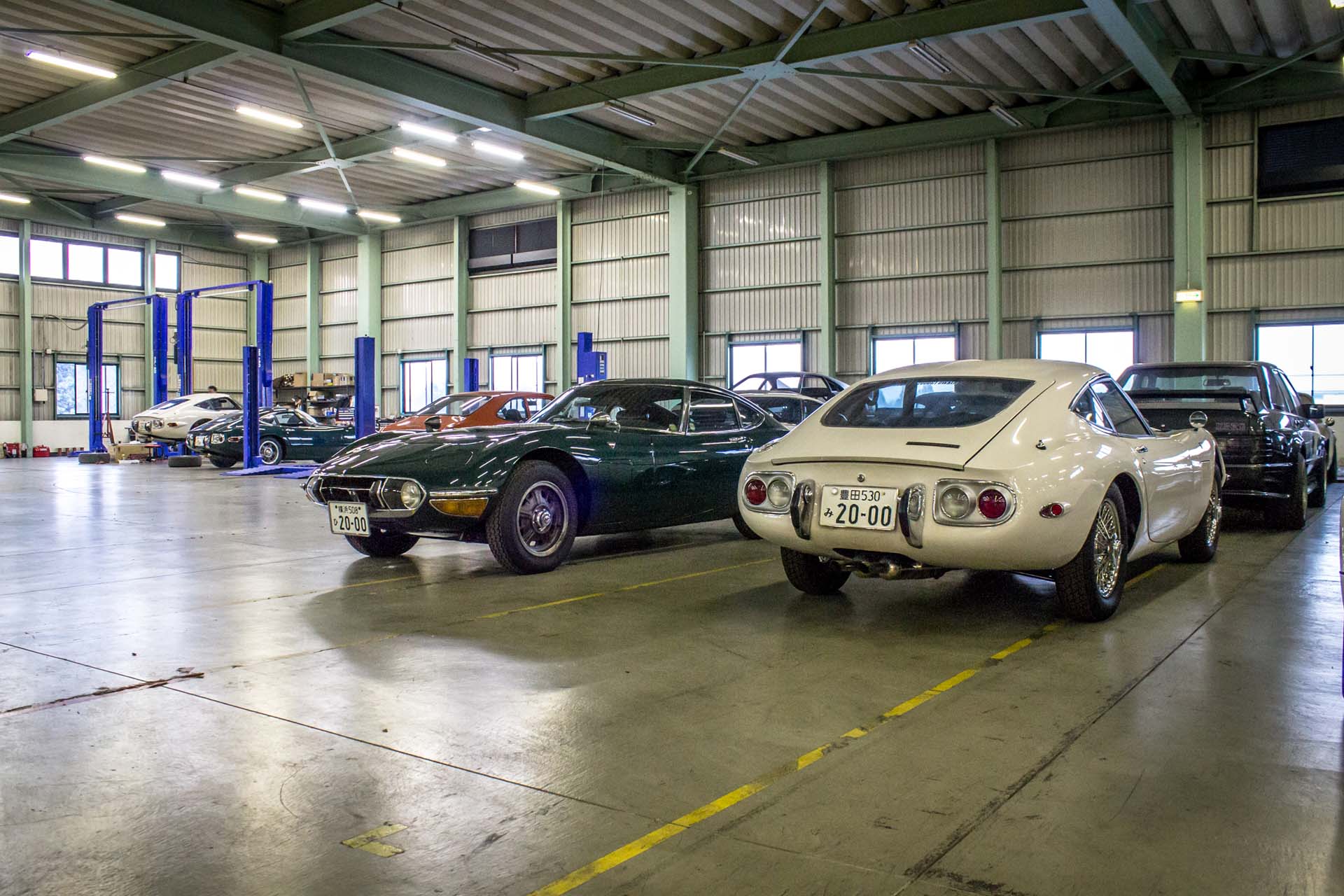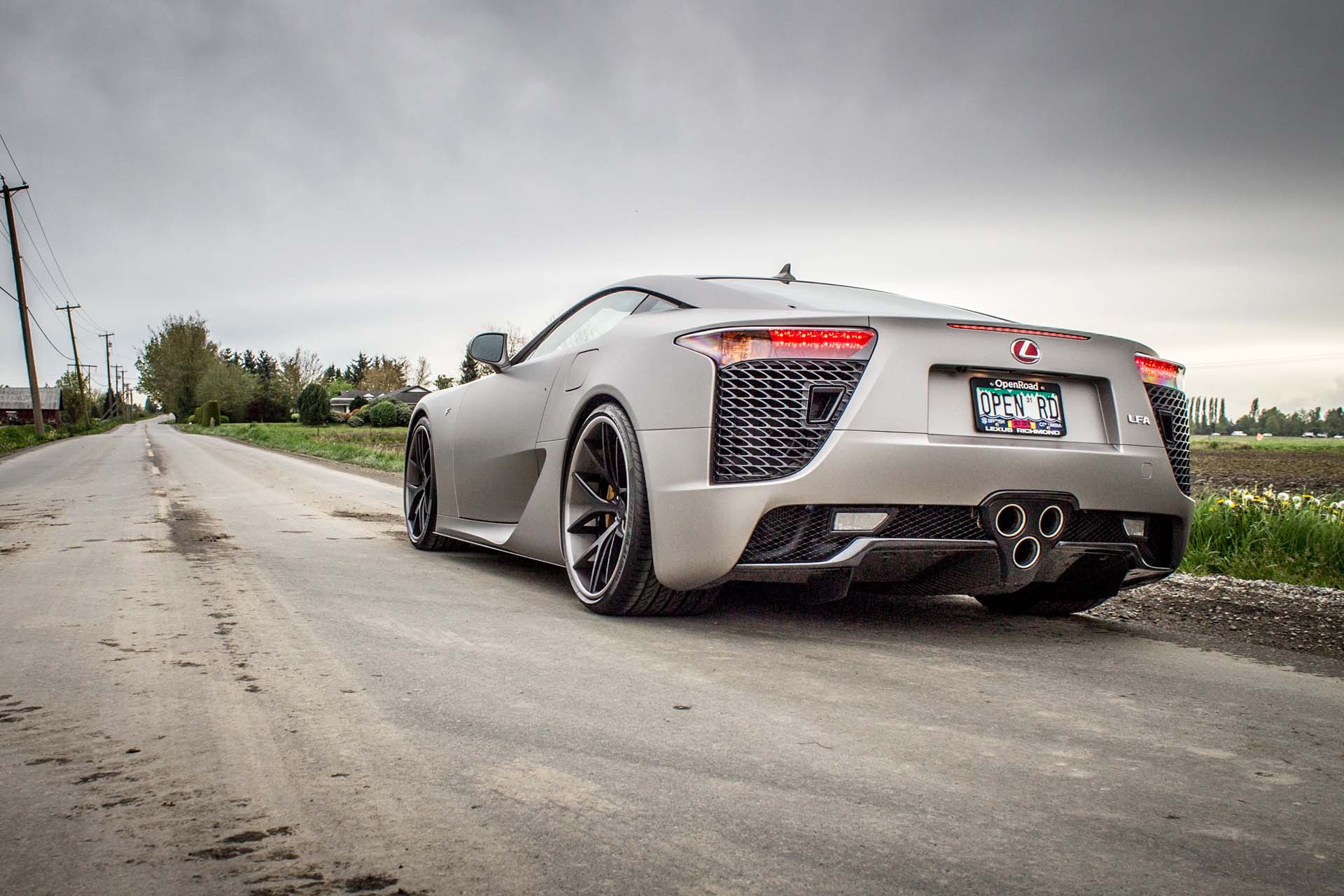It's impossible, of course. That Toyota, maker of such worthy yet unremarkable appliances as the humble Corolla could pull this liquid red sportscar out of the ether. Is it more beautiful than an E-type? Maybe, maybe not; maybe it's the incredible rarity that makes the 2000GT seem so special. Sitting there beneath the cherry blossoms, the breath catches in your throat. How can such a thing exist? And yet it does, to the tune of a million and a half dollars. Let's play.
This is the first Japanese supercar, and certainly the most valuable Japanese classic car in existence. Only one is known to exist in Canada, a rare left-hand-drive model. Just 351 2000GTs were made, and fewer than a fifth of them were sold in this configuration.
I've been lucky enough to stand in the presence of thirteen or so of these machines, gathered together in a hidden garage atop a factory in the outskirts of Tokyo. I've seen another in the Petersen Museum in Los Angeles.
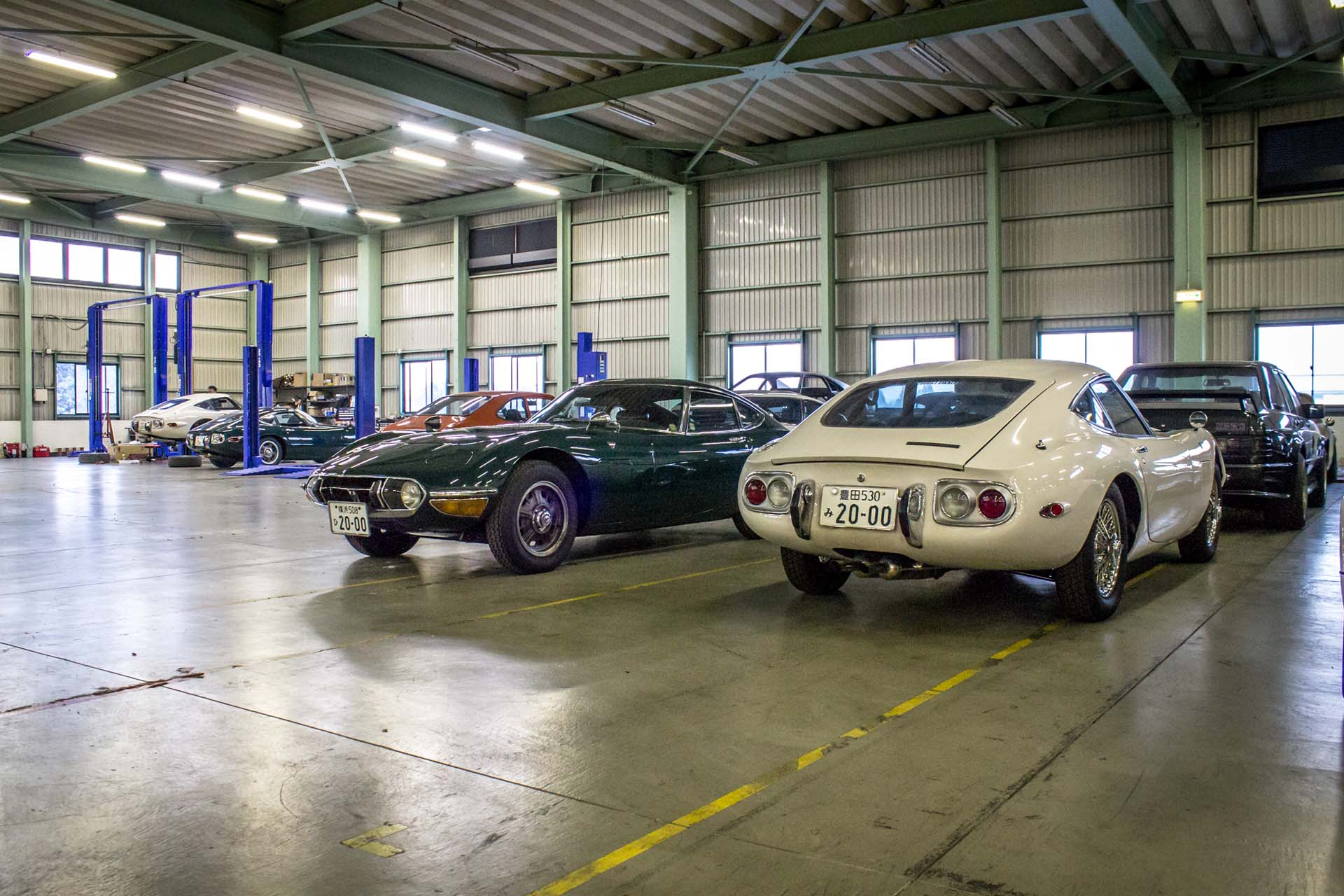
However, seeing one out there in the world truly astounds. It's just so perfectly proportioned, long and low and lean, skinned in aluminium and draped in crimson. Almost anywhere you look at it there are little details that jump out, from the hood louvres to the very Japanese fender mirrors, to the riveted and vented plate under the chin. You could look at this machine all day.
It belongs to Christian Chia, President and CEO of the OpenRoad group. An enthusiast at heart, Chia races in Porsche's GT3 Cup and has a small collection of vehicles including ex-Porsche works driver Vern Schuppan's 930 turbo. He's grown his business and his brand exponentially over the years, from four to eighteen separate dealerships, and is clearly driven to take OpenRoad even further. In person, he's what you might expect from a CEO: tall, sharply dressed, breaking away whenever there's a moment to deal with a flood of work emails.
However, somewhere in there is a kid who had a Corolla GT-S – a hachi-roku – as his first car. Chia calls the 2000GT his unicorn, and he was lucky enough to acquire it before the market went completely mental. All classic cars have appreciated rapidly in the last few years, and the 2000GT was the first Japanese machine to gain traction. Examples already have traded at well above a million dollars, and the combination of low availability and Japanese collectors unwilling to let the cars leave Japan are just driving the prices ever higher.

“But it's still a car,” Chia says cheerfully. “It's meant to be driven.”
Fold yourself into the impossibly low seats and close the door to seal yourself in the cockpit. The 2000GT's roofline is only a smidge taller than that of a Ford GT40, so it's cramped in here. Cramped, but luxurious – the rosewood dash is gorgeous, the switchgear and gauges all perfect. For the late '60s, this cabin is world-class, capable of matching the best England and Italy could throw at it. And then, because it's a Toyota, the straight-six fires right up on the first try.
Actually, I tell a lie: the 2000GT isn't a Toyota at all, it's a Yamaha. Originally, Yamaha created something akin to this car as a project to refresh Nissan's Fairlady roadster and bring it into the modern era. If you squint, you can see where a few of the ideas for the 240Z's shape came from.
Yamaha was at the time an established motorcycle manufacturer, but its heritage was in making musical instruments, something it had been doing since before the turn of the century. It was a company that knew much about the metallurgical arts, having made pianos as good as any Steinway.
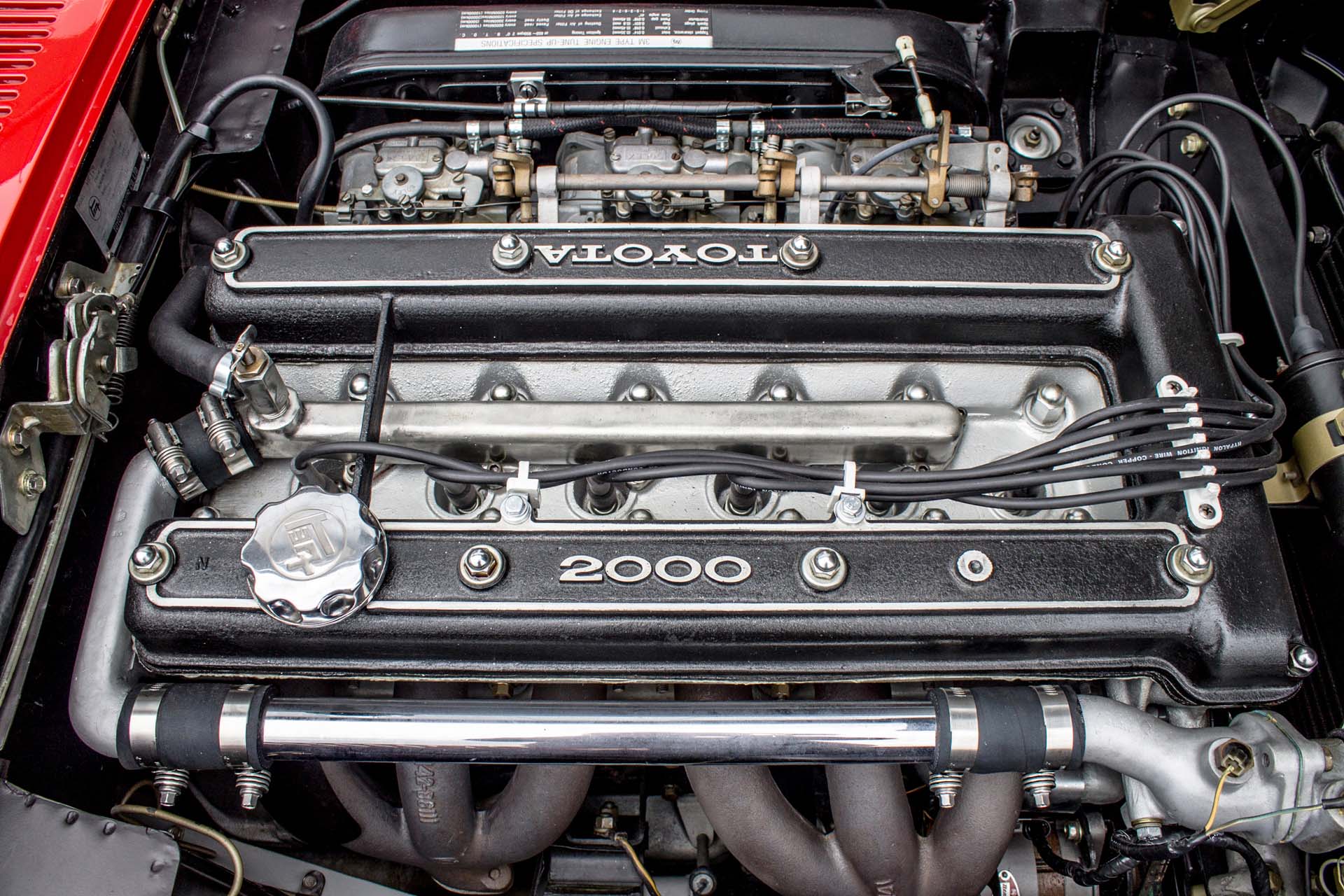
Nissan nixed the contract, so Yamaha approached Toyota instead. The two companies had worked together in the past, but it was something of a surprise when staid, consumer-focused Toyota elected to give the go-ahead. The final design went to Toyota's own Sartoru Nozaki, who gave the 2000GT the flowing grace of a Japanese calligrapher's brushstroke.
Under that long nose is a masterwork that would mark the start of something special for future Toyota fans. Yamaha took the 2.0L straight-six block out of the Crown sedan, and fitted its own better-breathing head with double overhead cams and triple Solex carburettors. The result was a sprightly 150 hp, matched against a curb weight not far off that of a modern Miata.
Further enhancing its sporting image, the 2000GT came with disc brakes all around and a standard limited slip differential. The company was so emboldened by the promise of their halo car, they even took it racing, hiring none other than Carroll Shelby to run a team competing in the 1968 SCCA championship. The 2000GT also set several endurance racing records.
It also was svelte enough to show up in a Bond film, You Only Live Twice, as a one-off convertible; reportedly, Connery's 6'2” frame was too big for the coupe. As most Japanese cars were small, economical, and disposable, movie-goers were surprised to see a Toyota that looked completely unique.
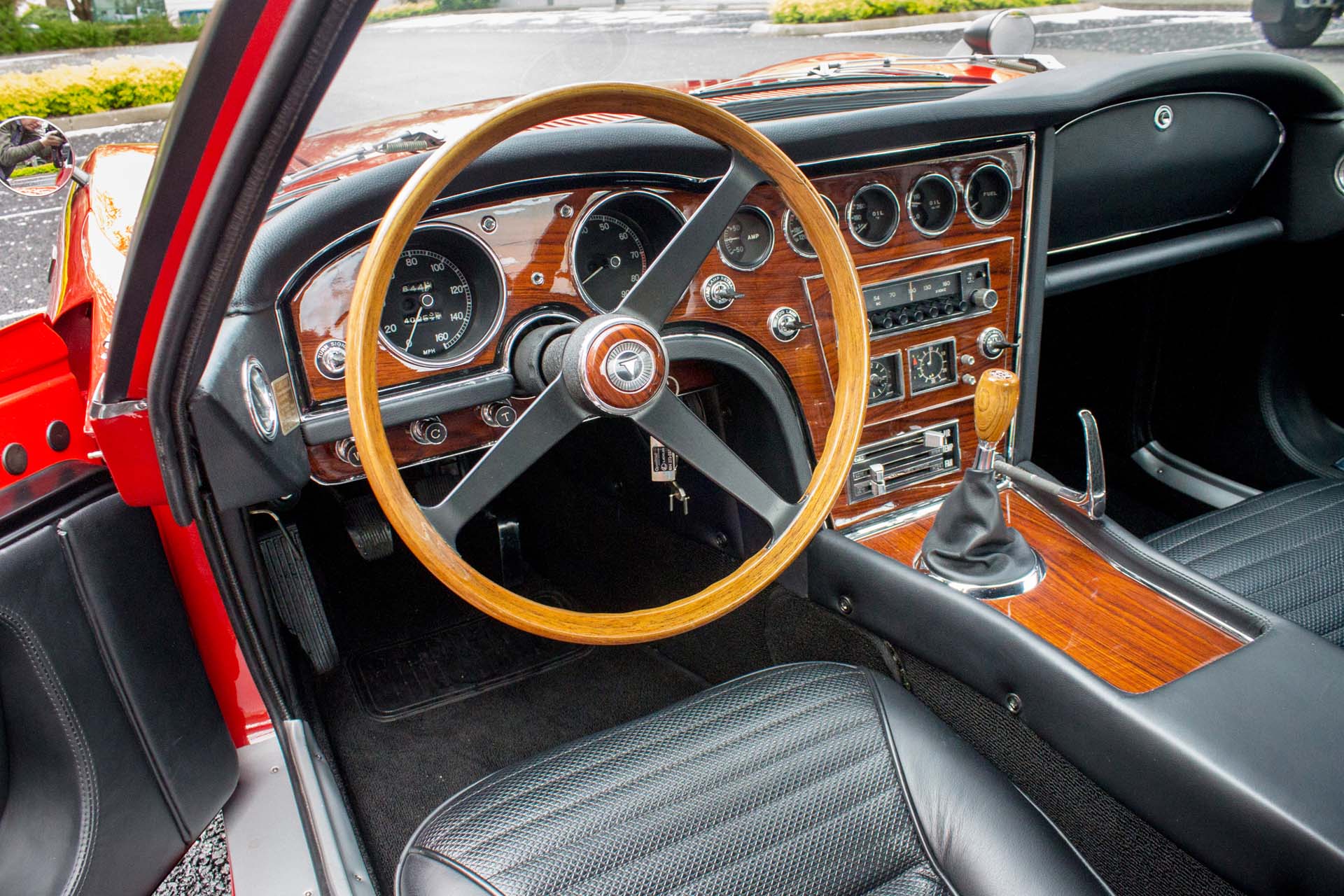
The straight-six revs as smoothly as if it were assembled by Swiss watchmakers. For a long, low coupe, the 2000GT is extremely easy to drive, the only real intimidating factor being the scarcely credible value of the thing. It's light on its feet, the way old European cars can be, but there's a sort of curious familiarity here to anyone who's driven an old Honda or Datsun.
The Japanese are very good at taking an idea and running with it down to the razor's edge of focus. It's why they've been so good at making whisky of late – the idea of distilling something to its essence fits right in with a culture that produced the twin blades that any samurai carries.
And, handily, we have a modern machine to benchmark the 2000GT against: Chia's Lexus LFA. Also built in concert with Yamaha, this time with an eye to the engine sound, the LFA is a far more raucous affair. It's the cacophony of a modern piano concerto next to a delicate classical piece.
The LFA screams where the 2000GT sings, but it's the same songbook. Anyone who thinks Toyota only makes boring cars isn't paying attention.
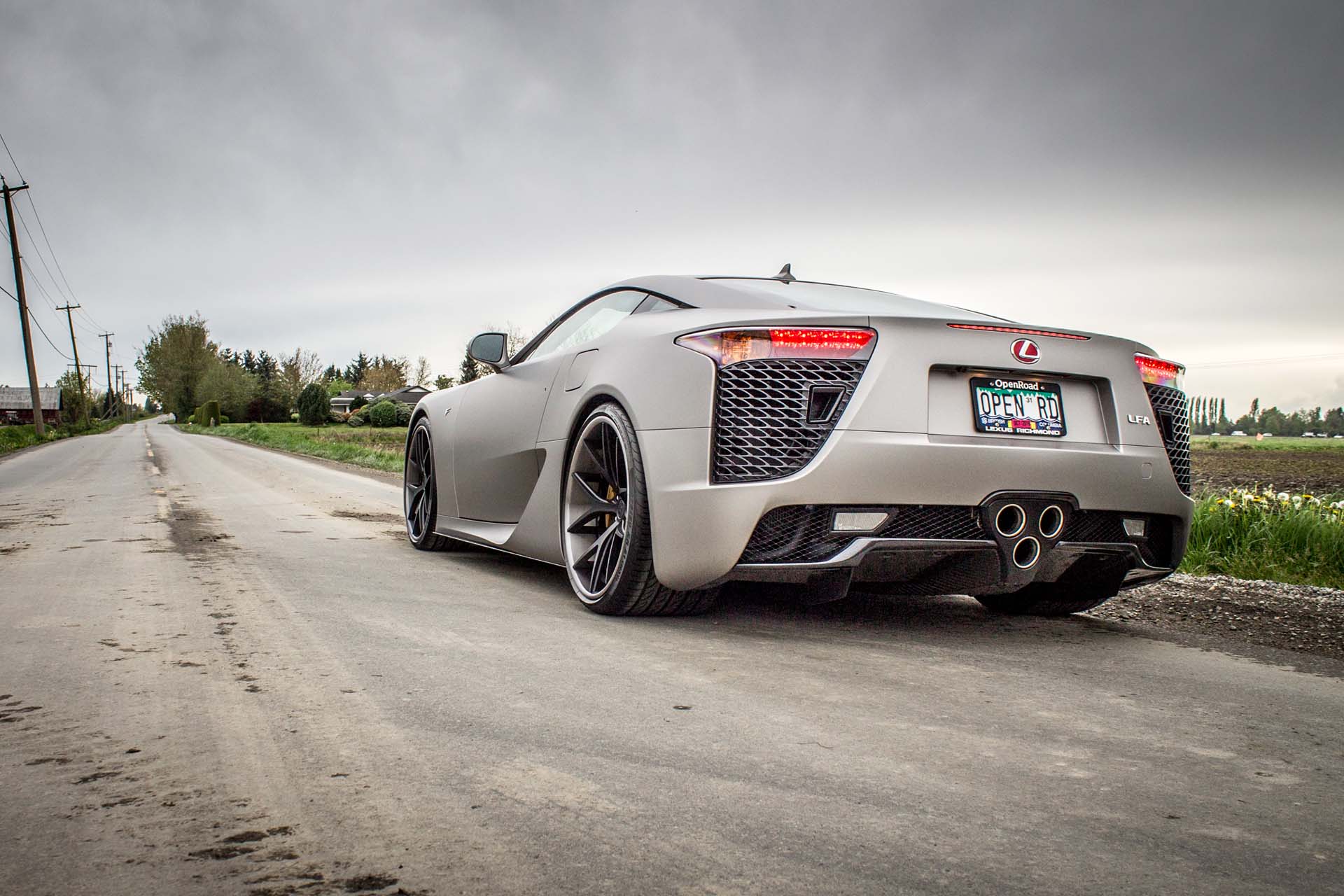
Neither the LFA nor the 2000GT sold in any quantities – and you'd be hard pressed to find an average person who understands why they're both so expensive. However, some of this special character would trickle down into other great Toyotas: the Corolla GT-S, the MR-2, the Supra. Yamaha had a hand in the engine development of many of them.
With the Scion FR-S about to get a Toyota badge once again, you have to wonder if the world isn't ready to start seeing Toyota in a different light yet again. Sure, they are a mass producer of automobiles, destined to chase after volume. Volume tends to beget blandness, and blandness begets boredom.
However, the 2000GT remains as a reminder that Toyota has tremendous resources it can bring to bear whenever it chooses. Most of the time, it'll play it safe, but every so often it gets restless for a little music in its life. The 2000GT was the first real expression of this unexpected soul. It remains the most beautiful.

